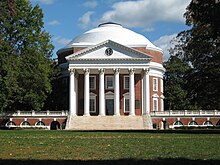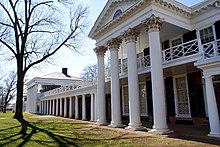No coordinates found
Jeffersonian architecture
American Palladian/Neoclassical architectureJeffersonian architecture is an American form of Neo-Classicism and/or Neo-Palladianism embodied in the architectural designs of U.S. President and polymath Thomas Jefferson, after whom it is named. These include his home (Monticello), his retreat, the university he founded, and his designs for the homes of friends and political allies. More than a dozen private homes bearing his personal stamp still stand today. Jefferson's style was popular in the early American period at about the same time that the more mainstream Greek Revival architecture was also coming into vogue (1790s–1830s) with his assistance.
Read article
Top Questions
AI generatedMore questions









